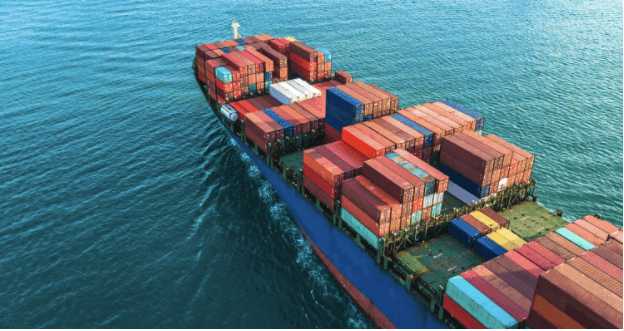The Telex Release Bill of Lading
Learn About the Digitalized Version of the Bill of Lading for Freight Shipping.

A telex release is a digitized version of a bill of lading used in freight shipping. It replaces the need for a consignee to present a physical version of the bill of lading to customs officials at the port of discharge when claiming a consignment of shipped goods.
What Is a Bill of Lading?

***A bill of lading serves multiple purposes, but in simple terms, it’s a document that names the seller and the buyer of the goods in an international trade transaction. ***
The buyer must present the bill of lading to customs officials at the port of arrival to claim the goods. By confirming the buyer’s identity and ensuring it matches the details on the bill of lading, customs teams can release the goods into the buyer’s possession.
Some Interesting Facts About the Telex Release
As with many elements of the shipping business, different terms are used to describe the same thing. That’s certainly true of the telex release, which you may see or hear referred to as any of the following:
- Release bill of lading
- Telex bill of lading
- Telegraphic transfer
Shippers of a certain age may be familiar with the word ‘telex’. For those new to the term, though, it’s a combination of the words ‘telegraph’ and ‘exchange’.
Before the days of the internet and email, telegraphs were the most popular way of communicating with ships while at sea. Exchanges were places where messages were received from the sender and forwarded to the recipient.
How a Telex Release Works
In international shipping, on receipt of payment from the buyer, the seller of the goods is required to send the original bill of lading to the carrier – the shipping company responsible for transporting the goods. The seller then requests the carrier to issue a telex release to the buyer.
The carrier sends the telex release digitally via email to the buyer/consignee (or the consignee’s agent) at the port of arrival. Some carriers demand that all fees are paid to them before they will do this.
The consignee then presents the telex release to customs officials at the port of arrival. If the identity of the consignee matches the identity stated in the telex release, the cargo can be released to that consignee without a physical bill of lading.
Why a Telex Release Is Important
The use of telex releases significantly speeds up the shipping process. It saves time and money by negating the need for a consignee to present a physical bill of lading when claiming a shipment.
As with all shipping documents, the wording used in a telex release is critical. Errors,carelessly written, or inaccurately translated content can facilitate the unintentional release of goods to fraudsters at the port of discharge. Although this is rare, it highlights the importance of accurate information in a telex release.
Now let’s look at the pros and cons of the telex release.
The Advantages Of a Telex Release
Speed of delivery
As telex releases are sent by email, they can arrive anywhere in the world in a fraction of a second. That means shipments can pass into the hands of buyers very quickly. In contrast, the paper-based original bill of lading (OBL) must be mailed or couriered to the recipient, a process that can take several days.
Flexibility
A telex release allows carriers or their agents to authorize a buyer to claim the cargo at the destination port, even if the shipper has presented the original bill of lading at another port. In this scenario, agents in the port where the shipper presents the OBL can send the telex release to the agents at the port of arrival, confirming receipt of the OBL.
Saves Money
A telex release helps avoid the need to keep cargo in hired storage units at the port of arrival until the physical copies of the bill of lading arrive. Telex releases also save shippers money by removing the need to courier hard copies of the OBL to the agents at the port of discharge.
Environmentally friendly
As a paper-free solution, telex releases reduce harm to the environment. They don’t consume paper, require printing processes, or require physical transportation to ports of discharge.
Can Replace the Bill of Lading Entirely
Some shipments can be carried out without issuing a paper-based bill of lading at all. For example, when the exporter and importer of goods work for the same business in different countries, there is no danger of fraud.
The ‘buyer’ and ‘seller’ are known to each other, so a hard copy of the bill of lading is not essential. In the absence of a paper bill of lading, the electronic message sent from the shipper to the consignee is known as an express release. It serves the same purpose as a telex release, but without a hard copy of a bill of lading.
The Disadvantages and Risks Of a Telex Release
Reliant on the internet
No internet connection is 100% reliable. When internet services go down, telex releases cannot be sent or received. As a result, shipping processes can suffer delays.
Not yet widely accepted
Some ports around the world cannot yet accept telex releases. Many don’t have digital platforms or procedures in place to process electronic documentation. They still rely on paper-based bills of lading to release goods to consignees or their agents.
Security
Although paper-based bills of lading are subject to counterfeiting, fraudsters have also been known to send fake telex release emails to discharge agents. These cause goods to be released to fake buyers who are in on the scam.
Carriers are wise to the actions of counterfeiters., but with shipments potentially worth hundreds of thousands of dollars, fraudsters go to extreme lengths to illegally get their hands on goods.
Protocols are in place to prevent such crime, and efforts are ongoing to keep pace with the increasingly advanced technology the criminals are using. Some carriers require the shipper to supply confirmation of the identity of the recipient in writing before they’ll release goods without a bill of lading. This somewhat nullifies the time-saving advantages of a telex release.
How Can I Get a Telex Release For a Bill of Lading?
Telex releases are obtained from the issuer of the original bill of lading—usually the carrier. In the interests of security, the carrier may insist on receiving payment of their fees as well as a letter of indemnity ahead of requesting a telex release. Assuming all stipulations are met, the shipper will email the telex release to the party identified as the consignee on the bill of lading.
Shipping companies and freight forwarders can request that a telex release be issued as part of the terms and conditions of the original bill of lading. This paves the way for the shipper to transport the freight without the need for the original bill of lading to accompany the shipment, reducing the chances of the document being stolen or mislaid.
That leads us to another important role telex releases play—replacing lost, stolen, or damaged bills of lading. When the original bill of lading cannot be accessed for some reason, the shipper must request a telex release from the carrier. In such situations, the carrier will only send the telex release when the original bill of lading is found, or if the shipper sends them a letter of indemnity.
The Future of Shipping Communications

Telex releases go a long way to helping the shipping industry move away from reliance on paper-based documentation and embrace a digitized future.
The benefits the telex release brings in terms of time and cost savings are widely appreciated. However, the platforms and processes required to ensure widespread adoption are not yet in place, meaning paper bills of lading will remain in use for some time to come.


